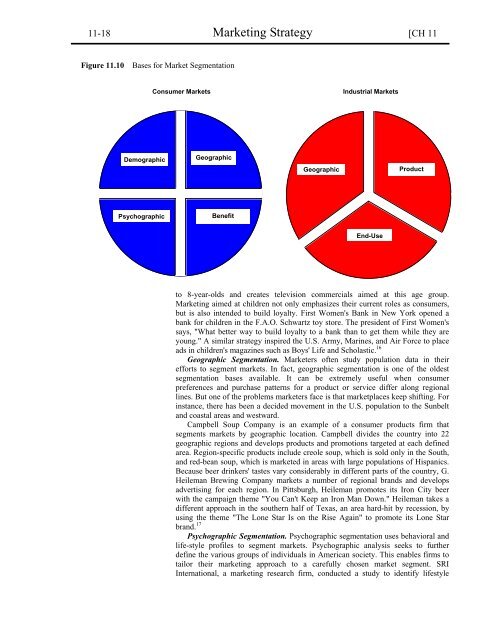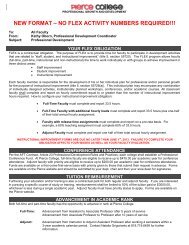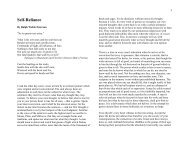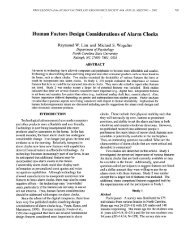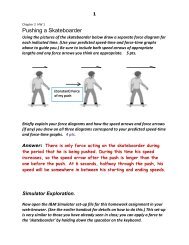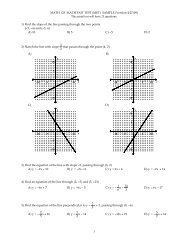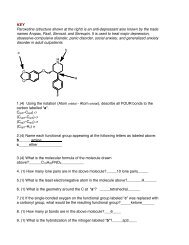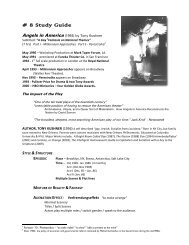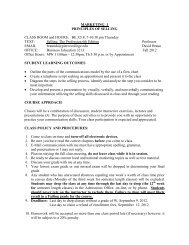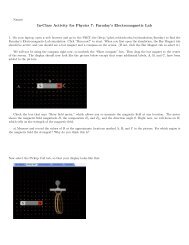Chapter 11 Principals Of Marketing - Faculty.piercecollege.edu
Chapter 11 Principals Of Marketing - Faculty.piercecollege.edu
Chapter 11 Principals Of Marketing - Faculty.piercecollege.edu
Create successful ePaper yourself
Turn your PDF publications into a flip-book with our unique Google optimized e-Paper software.
<strong>11</strong>-18 <strong>Marketing</strong> Strategy [CH <strong>11</strong><br />
Figure <strong>11</strong>.10 Bases for Market Segmentation<br />
Demographic<br />
Consumer Markets Industrial Markets<br />
Geographic<br />
Psychographic Benefit<br />
Geographic Product<br />
End-Use<br />
to 8-year-olds and creates television commercials aimed at this age group.<br />
<strong>Marketing</strong> aimed at children not only emphasizes their current roles as consumers,<br />
but is also intended to build loyalty. First Women's Bank in New York opened a<br />
bank for children in the F.A.O. Schwartz toy store. The president of First Women's<br />
says, "What better way to build loyalty to a bank than to get them while they are<br />
young." A similar strategy inspired the U.S. Army, Marines, and Air Force to place<br />
ads in children's magazines such as Boys' Life and Scholastic. 16<br />
Geographic Segmentation. Marketers often study population data in their<br />
efforts to segment markets. In fact, geographic segmentation is one of the oldest<br />
segmentation bases available. It can be extremely useful when consumer<br />
preferences and purchase patterns for a product or service differ along regional<br />
lines. But one of the problems marketers face is that marketplaces keep shifting. For<br />
instance, there has been a decided movement in the U.S. population to the Sunbelt<br />
and coastal areas and westward.<br />
Campbell Soup Company is an example of a consumer products firm that<br />
segments markets by geographic location. Campbell divides the country into 22<br />
geographic regions and develops products and promotions targeted at each defined<br />
area. Region-specific products include creole soup, which is sold only in the South,<br />
and red-bean soup, which is marketed in areas with large populations of Hispanics.<br />
Because beer drinkers' tastes vary considerably in different parts of the country, G.<br />
Heileman Brewing Company markets a number of regional brands and develops<br />
advertising for each region. In Pittsburgh, Heileman promotes its Iron City beer<br />
with the campaign theme "You Can't Keep an Iron Man Down." Heileman takes a<br />
different approach in the southern half of Texas, an area hard-hit by recession, by<br />
using the theme "The Lone Star Is on the Rise Again" to promote its Lone Star<br />
brand. 17<br />
Psychographic Segmentation. Psychographic segmentation uses behavioral and<br />
life-style profiles to segment markets. Psychographic analysis seeks to further<br />
define the various groups of individuals in American society. This enables firms to<br />
tailor their marketing approach to a carefully chosen market segment. SRI<br />
International, a marketing research firm, conducted a study to identify lifestyle


